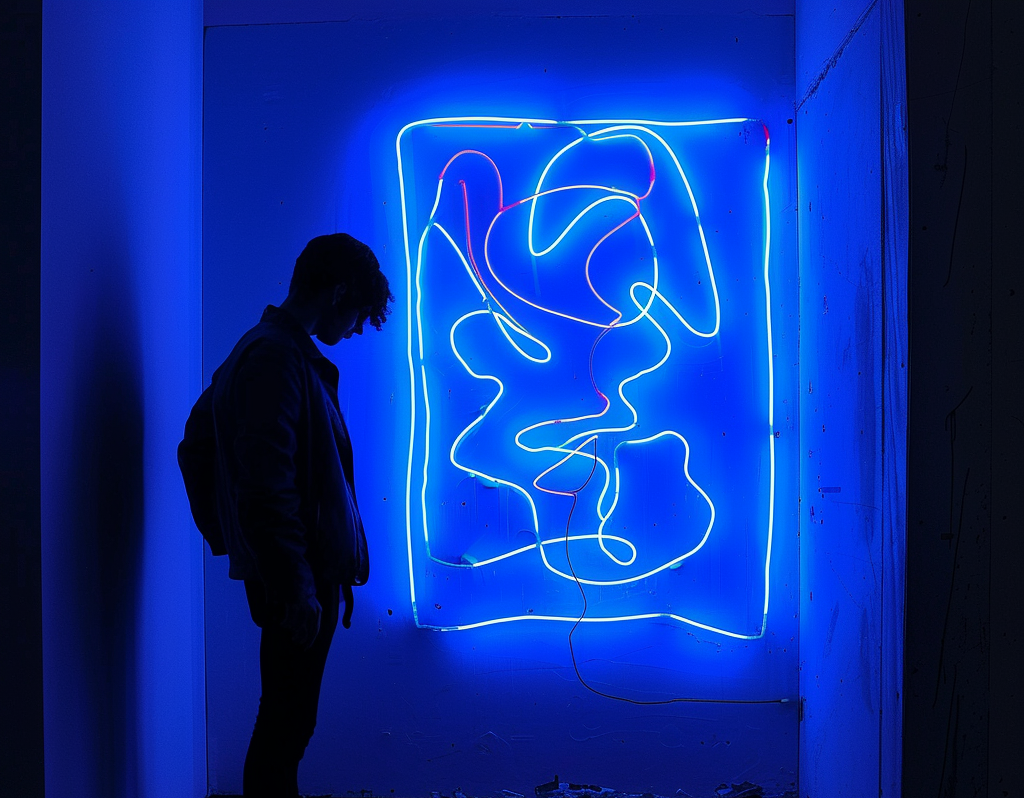In 2054, explore the Sensory Renaissance and the Poetics of Attention as humanity redefines perception and cherishes focus in an era of enhanced and diversified sensory experiences.

The Year In Review:
The year 2054 in the Starholder timeline unfolded with significant advancements and philosophical explorations into human perception and attention, further deepening the understanding of human sensory and cognitive experiences in an increasingly digital world.
The “Poetics of Attention” represented a profound shift in the way human attention was understood and valued within the connected society of the Starholder timeline. This qualitative approach sought to map attention as a deeply held human experience, moving beyond traditional quantitative metrics that often reduce attention to something that can merely be measured and monetized. Emerging in a society overwhelmed by stimuli, this philosophical shift highlighted a growing awareness and respect for the integrity of human focus and its crucial role in shaping reality and personal experiences. The concept emphasized understanding attention as a significant, lived aspect of human interaction with the world—an element that shapes perceptions and decisions in profound ways.
Simultaneously, “Neosensing: The Augmented Tapestry of Human Perception” marked a milestone in technological enhancements related to human senses—ushering in what was termed the Sensory Renaissance. Neosensing technology expanded and diversified human sensory capabilities, profoundly altering interpersonal communication and interaction with the environment. This radical augmentation of natural faculties didn’t just enhance human experience; it redefined the very boundaries of perception, allowing people to experience the world in previously unimaginable ways. This technological leap prompted a reevaluation of the human relationship with both the digital and physical realms, offering new modalities of existence and interaction.
Adding a cultural narrative to these explorations, “Ache and Unfold” captured a surreal and transformative moment in an urban setting, where a simple change in the color of traffic lights catalyzed a broader transformation in the public’s collective mood and experience. The story illustrated how minor alterations in environmental cues could deeply affect communal and individual psyches, reflecting the themes of sensitivity and perceptual change that permeated the year.
Together, these narratives from 2054 provided a rich tapestry of thought and innovation within the Starholder timeline. The integration of advanced sensory technologies, along with a new appreciation for the qualitative aspects of human attention, painted a year of both celebration and introspection. It was a period marked by redefinition and expansion of human capabilities and consciousness, as society navigated the complexities of an ever-evolving digital and sensory landscape. This exploration into the depths of human perception and attention highlighted the ongoing dialogue between technology and the fundamental human experiences that shape and color our world.
Articles and Topics:
- Poetics Of AttentionThe “Poetics of Attention” refers to a qualitative approach to measurement within the Starholder Timeline—an approach seeking to understand and map attention as a deeply held human experience, rather than a mathematical or quantifiable metric. This concept first emerged amidst a connected society in which numerous stimuli battled ceaselessly for human focus, understanding that the …
- Neosensing: The Augmented Tapestry of Human PerceptionIntroduction In the chronicles of the Starholder timeline, the advent of neosensing marked a revolutionary epoch in human evolution—a time when our natural faculties were not only enhanced but also profoundly diversified. The augmentation of sensory processing led to an era colloquially known as the Sensory Renaissance, wherein humanity redefined its relationship with perception, communication, and interaction with …
- Ache and UnfoldThe city exhales into the night, and the traffic lights turn a surreal shade of blue, signaling the inception of a new dance. The mood of the streets is alchemical—an intermingling of anticipation and disorientation as the familiar red halts transform into an incandescent azure, iridescent against the obsidian of the impending dusk. The night …
